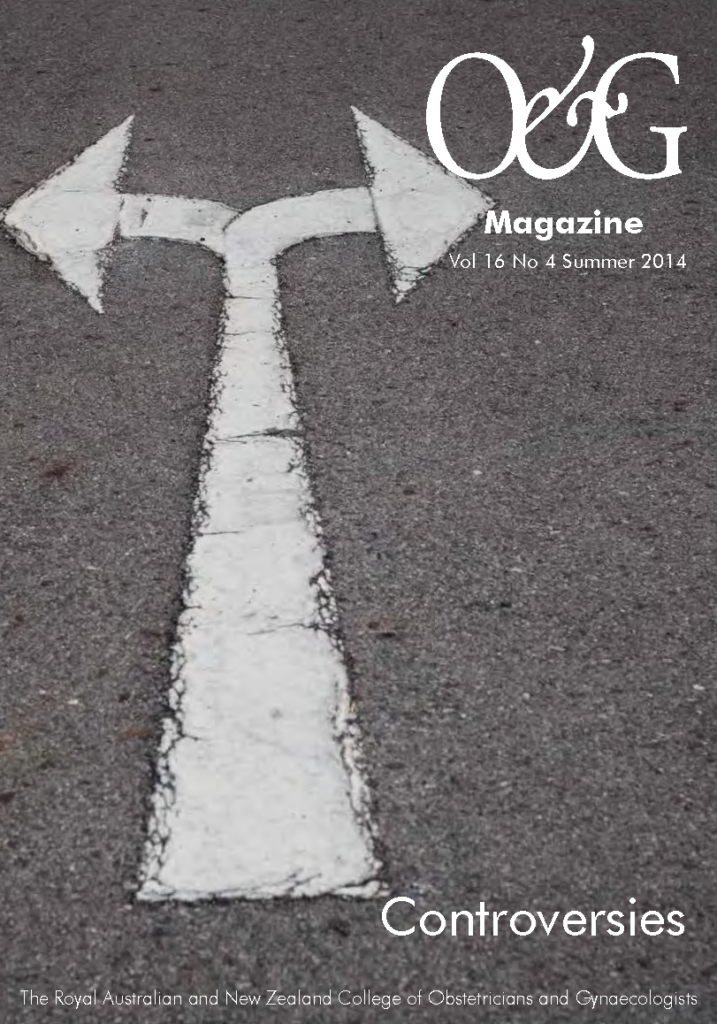‘Science moves fastest when there’s plenty of debate and controversy.’
– Lee Smolin1
If it seems odd that this issue of O&G Magazine should look to a Harvard theoretical physicist such as Lee Smolin for its opening quote, then let me put your mind at rest. Prof Smolin is the originator of the ‘fecund universes’ theory – he proposes that each universe enjoys properties such ‘reproduction’ and ‘mutation’, and that processes analogous to population biology occur at the grandest scales across the cosmos. For anybody who has more than a passing interest in physics (and that rarest of things for busy doctors, spare time), Smolin’s book The Life of the Cosmos1 is an excellent read.
Smolin’s ideas were attacked at the time, but as happens with all good science, he made predictions that were ultimately found to be true. This is the essence of scientific advancement – the development of theories that can be tested. So it is important that orthodoxies are held up to scrutiny, debated and ultimately the best ideas come to be accepted. Controversy and debate are healthy for the advancement of knowledge and knowledge underpins the work we do.
This issue of O&G Magazine is devoted to controversy. Those who have been in practice for more than a couple of decades will recognise just how much our practice and ideas have changed within our professional lifetimes. At times, the pace seems staggering. When I was a medical student, in the early 1980s, I was taught that a ‘nice snug anterior repair’ was the solution for stress incontinence. By the time I became a registrar in the early 1990s, the open Burch operation was the gold standard. Today, the mid-urethral sling has become the most-studied procedure in all of medicine. In that same way, an endometrial ablation with a modified resectoscope was a major and time-consuming undertaking, at times fraught with peril. After an evolution through microwave and balloon procedures, for many women the procedure can now take as little as a couple of minutes with new-generation techniques.
Across the breadth of our specialty, ‘controversial’ ideas have led to advances in care that benefit women and their families. Many of these changes were controversial at the time. Do you remember the frenetic debate that heralded the development of IVF, something that seems completely mundane now? The use of testicular sperm from azoospermic men, acquired surgically, for injection into eggs? Mesh for vaginal prolapse, now evolved into abdominal procedures to treat otherwise intractable vault prolapse? Laser treatment in monochorionic twin pregnancies to deal with twin-twin transfusion? The abandonment of pelvimetry? Uterine transplantation? Use of cell-free fetal DNA for early pregnancy screening?
What issues will we find controversial in the future? Personally, I think the next big areas of controversy are going to be pre-pregnancy screening of couples for inherited genetic traits and the use of ovarian tissue cryopreservation for women who are not yet ready to begin their families. My predictions have been wildly inaccurate in the past (footy tipping is not my forte), but both of these issues are technically easy now, but have the potential to ignite a firestorm of debate and controversy. Both might have profound effects on the next generation. Watch this space!
In this issue of O&G Magazine we publish the views of a number of erudite experts, guiding us through areas of controversy, and we have ventured to ask an economist to contribute – a first for us. We would like to acknowledge the enormous contribution of our authors. As always, the team here at O&G Magazine actively seeks feedback and debate. And, dare I say it, controversy…
Enjoy reading this issue over your summer break. Merry Christmas.
References
- Smolin, Lee. 1997. The Life of the Cosmos. OUP. Oxford.






Leave a Reply